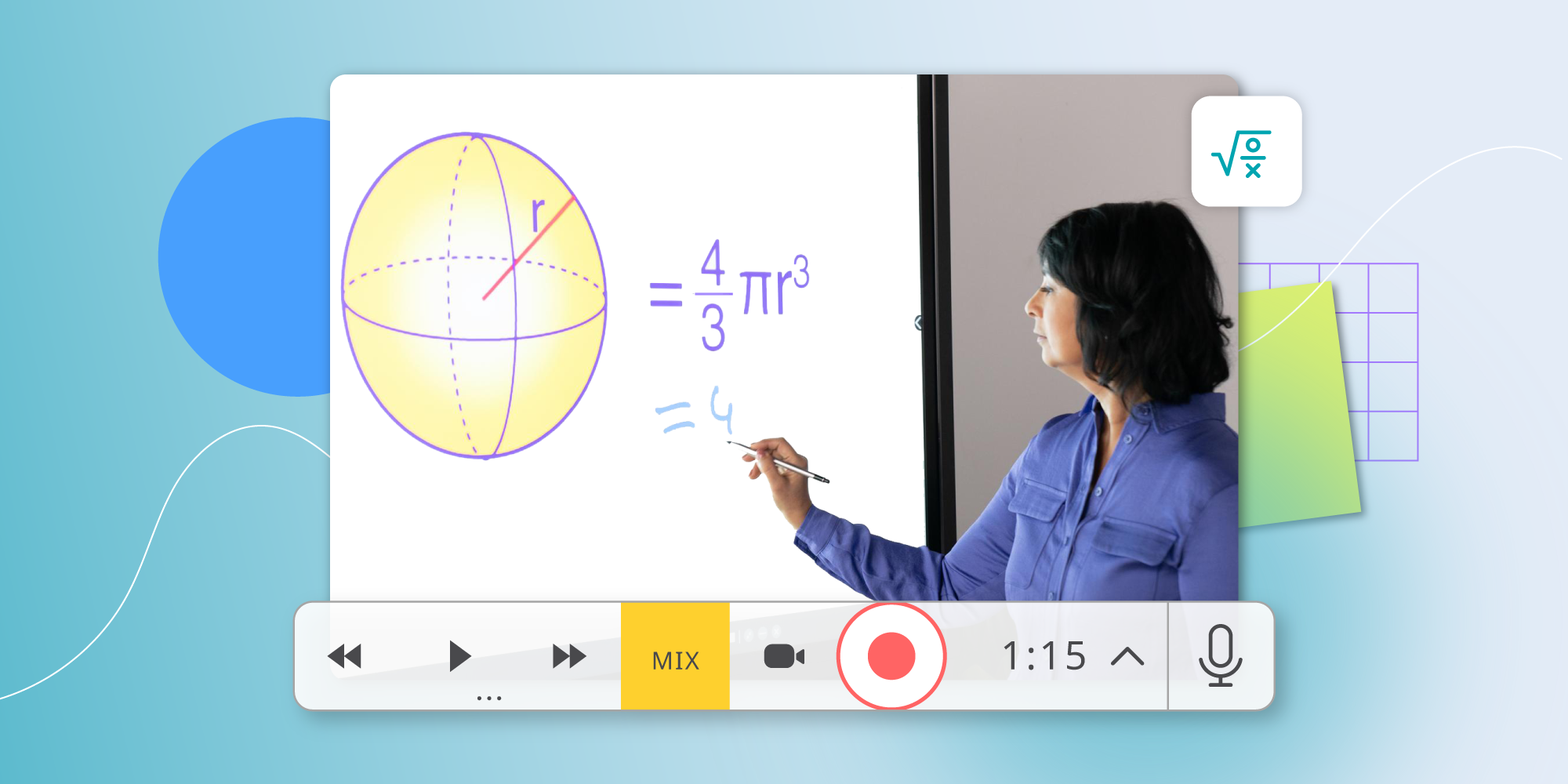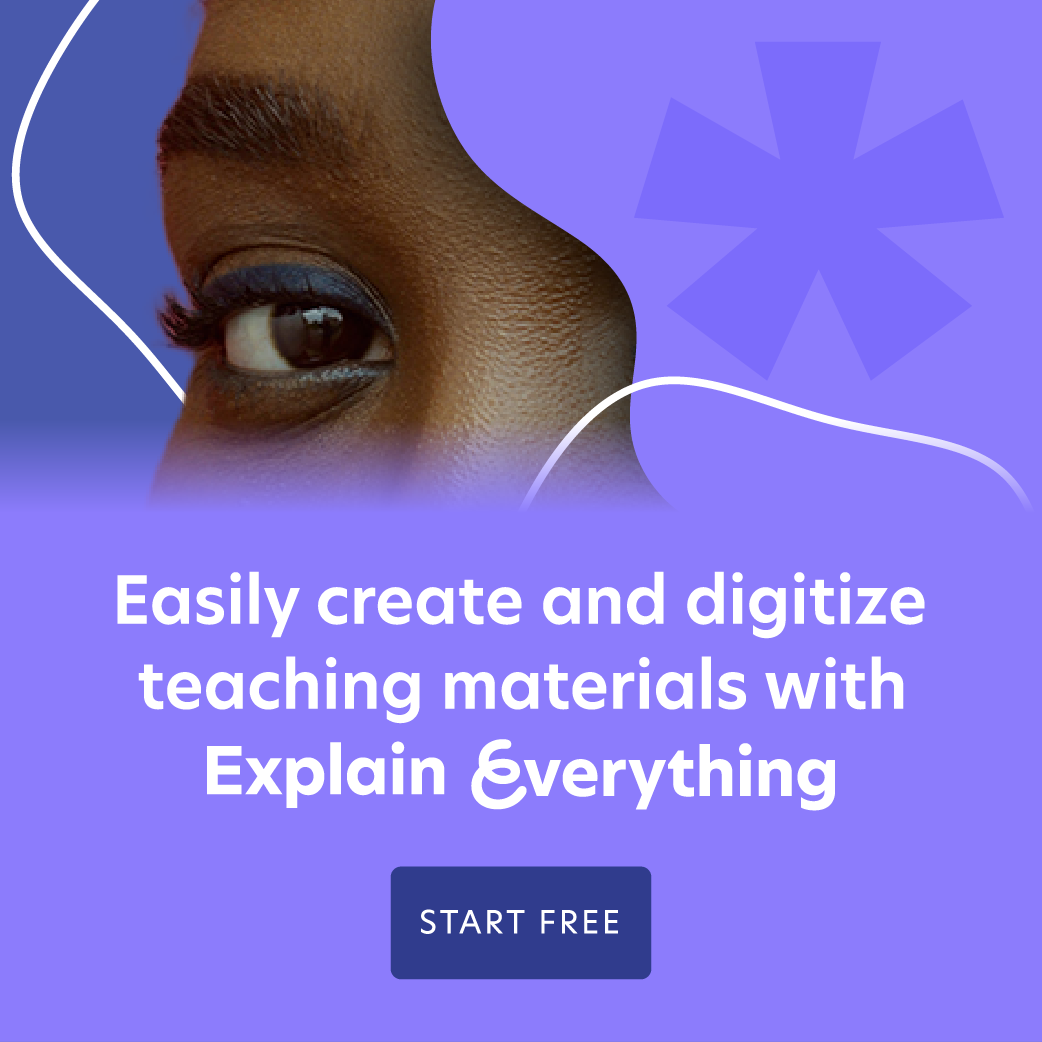Making a 5E Science Lesson Plan With Explain Everything

Table of Contents
The benefits of using the 5E lesson plan to structure classes are well-known to science teachers everywhere. It is a simple and clear framework that directly tackles student engagement and lends itself to planning standards-aligned lessons. For teachers who are unfamiliar with the scientific lesson plan, this guide is going to explain how it works and how it is used in the context of teaching science today.
What is the 5E Lesson Plan?
The 5E lesson plan is based on a 5-stage instructional model. The five “Es” of the model are: Engage, Explore, Explain, Elaborate, and Evaluate. By design, a 5E lesson plan will avoid front-loading students, instead allowing them to engage with and discover concepts for themselves.
The model was originally developed by the Biological Sciences Curriculum Study (BSCS) in 1987 and was first proposed by Dr. Rodger Bybee. The 5E instructional model was designed as a way to structure science lessons and enhance students’ understanding of scientific ideas and concepts. Despite being made for science education, it has become a popular methodology across many other subjects.
Exploring the 5E Science Lesson Plan
The aim of the 5E model is to give students a means of connecting abstract scientific concepts to their own experiences, something especially useful when teaching the more technical aspects of the sciences. Also seen as an approach to inquiry science, the 5E model tries to instill a sense of curiosity, exploration, and a need for evidence-based explanations for justification.
Below, we’ve laid out a 5E science lesson plan to give you a complete understanding of the model and to provide you with a template for teaching science modules with this methodology today.
1. Engage
The first phase of the 5E science lesson plan is Engagement. This initial stage is designed to pique the curiosity of the students, usually by introducing a question or concept that the students cannot solve (yet). You could even conduct a simple experiment to demonstrate the scientific concepts that they will be learning about. If possible, try to build on previous concepts learned in other lessons to create meaning in the pupils’ minds.
During the Engagement phase, it’s important to make your teaching as interactive as possible. With the Explain Everything collaborative whiteboard, it’s easy to gather different media forms in one place, so you can switch seamlessly between images, videos, and animations. You can also upload photos of worksheets and annotate everything as you go.
You can even extend the Engagement phase by setting it as homework for the class to follow.
2. Explore
The second phase, Explore, uses inquiry activities to allow students to actively observe what they’re studying, think critically about the material, and connect concepts from the Engage stage. You should encourage the students to consider what they already know and what they are trying to find out/what is the problem they are trying to solve.
This could take the form of a classification exercise of different natural objects, some form of lab investigation as a group, or even interactive 3D models that each of the students has to try to label. Explain Everything’s 3D Model adapted software makes it easy to bring large concepts to life, like the atom, the relative size of mammals and dinosaurs, or even how typical rollercoasters are powered by gravity alone.
3. Explain
The third phase of the lesson plan, Explain, is where the teacher explains the concepts from the previous stage and guides the students toward defining and understanding their findings. In a science class, this part of the lesson plan could begin with brief demonstrations of what the students have discovered in the Explore stage, followed by prompts or additional questions from the teacher. The additional questions and prompts can then be used to segue into a deeper discussion about the key concepts being taught.
Multimedia presentations and dynamic slideshows on a collaborative whiteboard can help to engage and reinforce your explanation at this stage.
4. Elaborate
In the Elaborate phase, students are invited to apply what they’ve understood from the previous phases, by solving a problem in a new context. This can be done in class or assigned as homework, in groups, or individually. You can also use this stage to extend your class’s understanding of the topic by connecting it to the real world or their own personal experiences.
This can take the form of collaborative project-based activities, where students must research examples of what they’ve learned, or an interactive quiz about the recently discovered concepts. With the capacity to broadcast to other devices, store, and edit digital assignments, Explain Everything’s collaborative whiteboard makes the 4th stage of the 5E lesson plan simple and efficient.
5. Evaluate
In the final stage, students demonstrate their mastery of the scientific concepts from the previous stages. It is also where the educator must evaluate their students’ level of understanding and if the lesson objectives have been met. This is also the perfect time to give students feedback about their engagement and learning.
This final stage can take whatever form the teacher sees fit for their class. For example, you don’t have to limit the evaluation to a quiz or formal test. In fact, multiple different types of evaluations might be more beneficial in this context. The Explain Everything collaborative whiteboard is a great way for students to be creative and display what they’ve learned in a variety of formats, including video and audio presentations. By giving them the freedom to apply their knowledge to something that they can relate to, abstract scientific concepts become relatable and memorable.
You may already be using some of the aforementioned concepts in your science lessons, so we encourage you to reflect on the above and think about how you can gently integrate the 5E model into your current practice. In fact, there’s no need to build in all the steps at once, you can start small and spread the phases over many lessons if necessary.
Incorporating the 5E Lesson Plan
The 5E lesson plan provides a structured and effective approach to teaching science, enhancing student engagement and understanding. The model’s five stages—Engage, Explore, Explain, Elaborate, and Evaluate—create a dynamic and inquiry-based learning experience. By utilizing interactive tools such as Explain Everything’s collaborative whiteboard, teachers can seamlessly integrate multimedia elements, making the learning process more engaging and accessible. The model’s flexibility allows educators to adapt and incorporate its phases gradually, ensuring a smooth transition into this proven and impactful teaching methodology. Embracing the 5E lesson plan empowers both teachers and students, transforming science education into a captivating and memorable journey of discovery. For more information, get in touch today!

